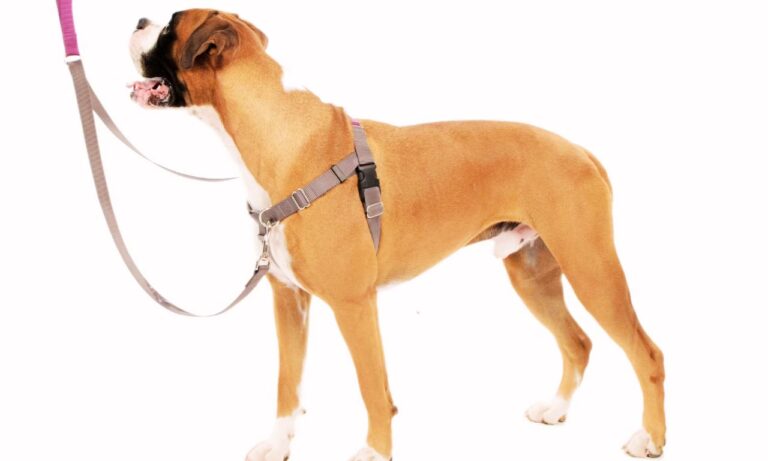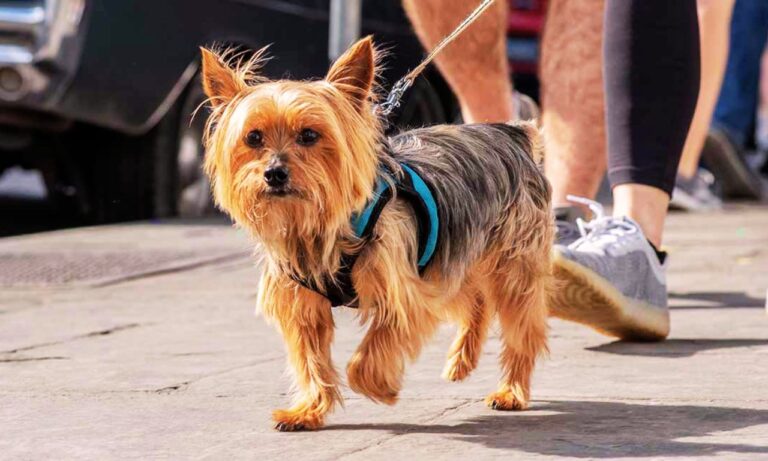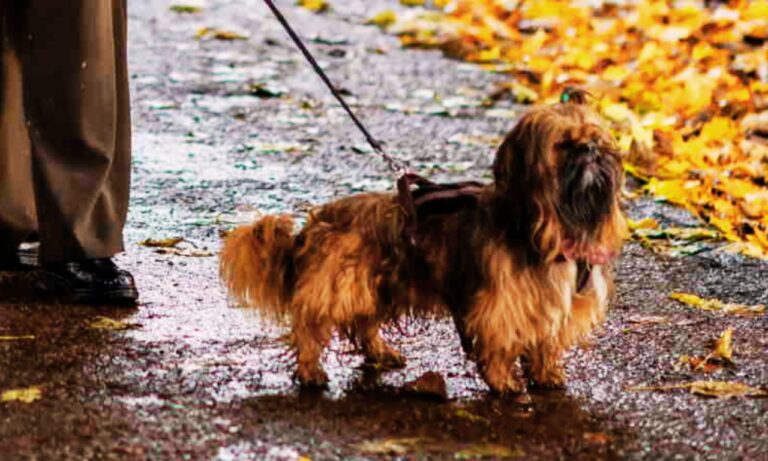St. Bernards are large, strong, and gentle giants, so finding the right collar and ensuring it’s properly adjusted is key to their comfort, safety, and control during walks. A collar that’s too loose can slip off, and one that’s too tight can cause discomfort or injury. So, what are the best practices for St. Bernard collar adjustment?
I’ll go over everything you need to know about choosing the correct collar size for your St. Bernard and how to properly adjust it for optimal fit and functionality. For a detailed guide on how to train a Bull Terrier with the right collar, check out this comprehensive article that outlines effective steps and techniques.
Blog Highlights
ToggleUnderstanding the Size of a St. Bernard
St. Bernards are massive dogs, typically weighing between 120 to 180 pounds (54 to 82 kg) and standing around 25 to 30 inches (64 to 76 cm) at the shoulder. Their large size makes choosing the right collar crucial for their safety and comfort. St. Bernards also have thick fur and muscular necks, which require a strong and wide collar to evenly distribute pressure without causing discomfort.
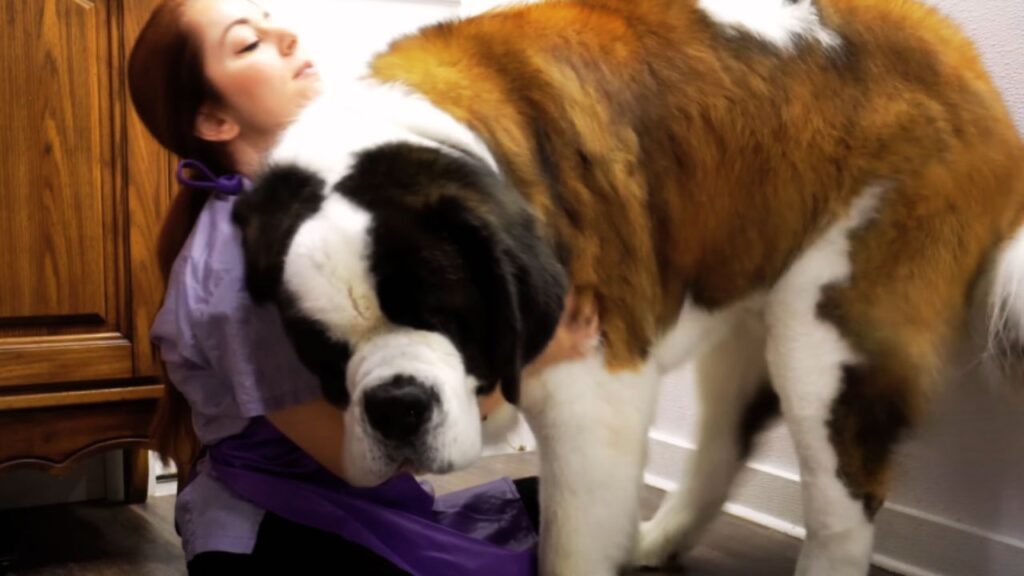
When choosing a collar for a St. Bernard, you need to consider not only the neck size but also the strength of the material, the width of the collar, and how adjustable it is. Determine the ideal collar size for a Bernese Mountain Dog with this guide.
How to Measure Your St. Bernard’s Neck
Before purchasing a collar, it’s essential to measure your St. Bernard’s neck accurately. Explore if mountain dogs are good pets and suitable for your home.

Here’s a step-by-step guide to doing it:
- Use a Soft Measuring Tape: A soft measuring tape, like the ones used for sewing, is ideal for getting an accurate measurement. If you don’t have one, you can use a piece of string and then measure it with a ruler.
- Locate the Correct Spot: Measure around the base of the neck, where the collar will naturally sit. Make sure the tape is placed snugly but not too tight.
- Apply the Two-Finger Rule: After wrapping the measuring tape around the neck, check to see if you can comfortably fit two fingers between the tape and your dog’s neck. This ensures that the collar won’t be too tight, allowing for a comfortable fit that won’t restrict breathing.
- Record the Measurement: Once you have the measurement, round it up to the nearest inch. For example, if your dog’s neck measures 26 inches, you should look for a collar that adjusts to fit between 26 to 30 inches to allow for some flexibility.
Choosing the Right Collar Size for St. Bernard
The average neck size for St. Bernards is between 26 and 30 inches. Most collar manufacturers offer extra-large (XL) or XXL collars designed for large and giant breeds. Here’s a basic guide to the sizes you should look for:
Make sure the collar is adjustable to provide a comfortable fit as your dog’s neck size can vary slightly depending on their weight and activity levels.
Best Collar Types for St. Bernards
St. Bernards, due to their size and strength, need collars that are durable, comfortable, and provide control during walks. Here are some of the best collar types to consider:

1. Flat Buckle Collar
Flat buckle collars are one of the most common types of collars used for everyday wear. These collars are sturdy and have a buckle closure that keeps the collar securely in place. They are typically made from materials like nylon, leather, or neoprene, which offer durability and comfort. Find out whether collars are bad for a dog’s neck and fur and how to avoid common issues.
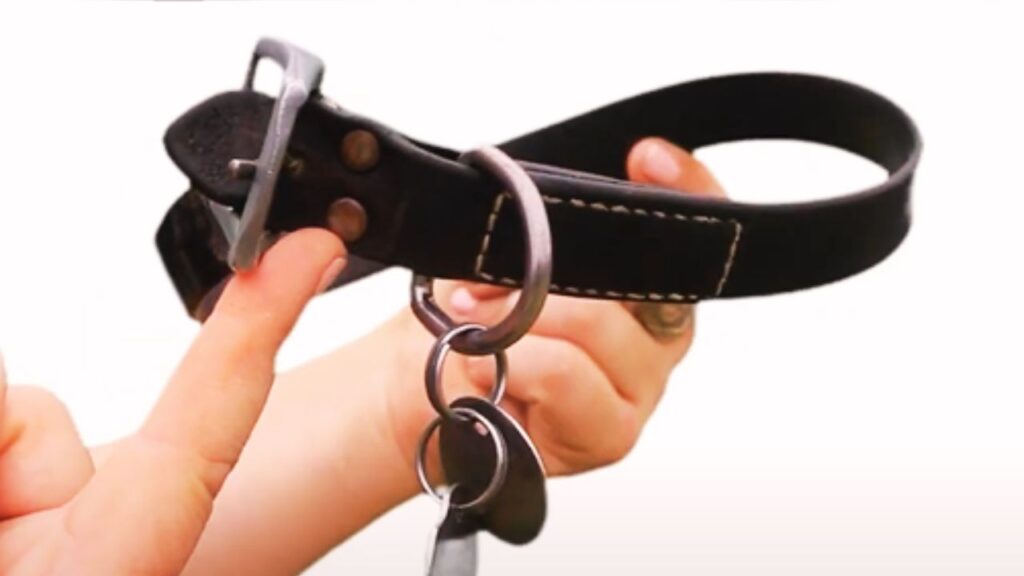
- Pros: Easy to use, secure, and widely available.
- Cons: May not provide enough control if your St. Bernard tends to pull during walks.
2. Martingale Collar
A martingale collar is an excellent option for St. Bernards that are prone to slipping out of their collars. Martingale collars tighten slightly when the dog pulls, preventing the collar from slipping over the dog’s head without choking them. This type of collar is great for training and for dogs with thick necks like St. Bernards.
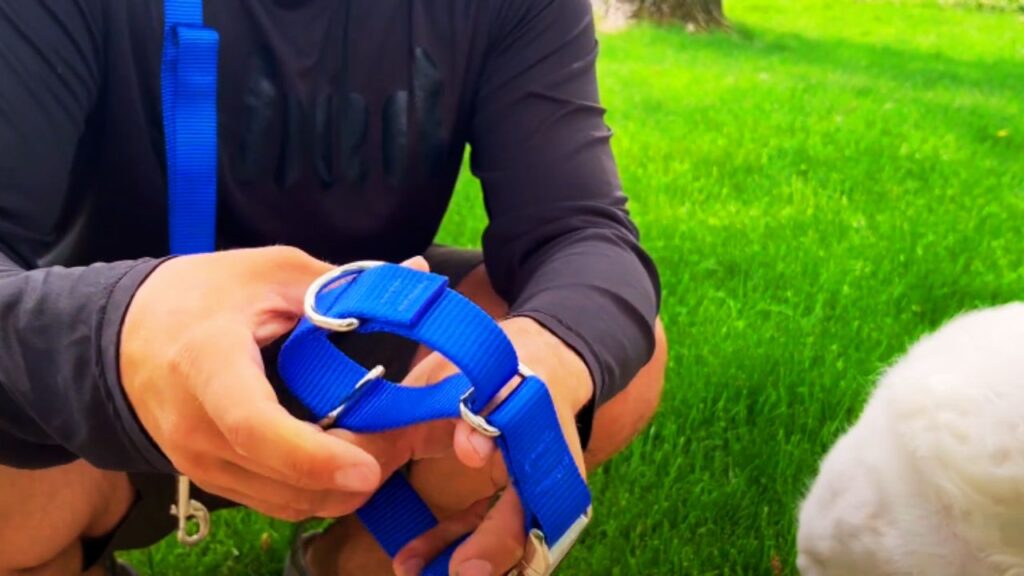
- Pros: Provides more control and prevents the dog from slipping out.
- Cons: Should be fitted correctly to avoid excessive tightening.
3. Harness
For giant breeds like St. Bernards, harnesses can be a better alternative to collars for leash walking. A harness distributes pressure across the dog’s chest and back instead of focusing it on the neck, making it safer for dogs that tend to pull.
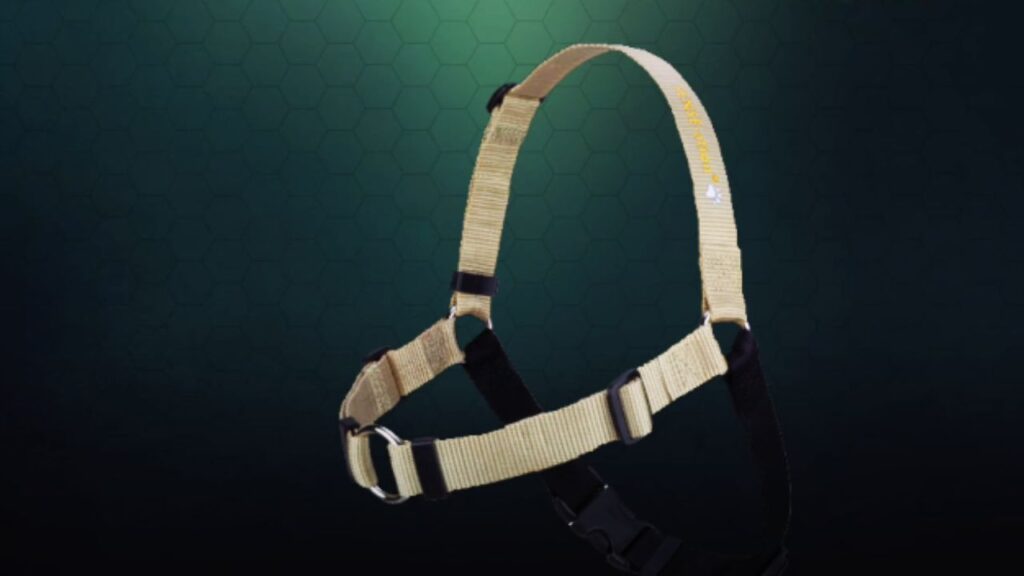
- Pros: Reduces strain on the neck, provides more control during walks.
- Cons: Can be bulky or uncomfortable if not fitted properly.
4. Padded Collars
Given that St. Bernards have thick fur and sensitive skin, padded collars can offer extra comfort. These collars often come with an extra layer of cushioning, which helps to prevent the collar from digging into the dog’s skin. Learn if it’s bad to leave a dog’s collar on all the time and how to ensure your pet’s comfort.
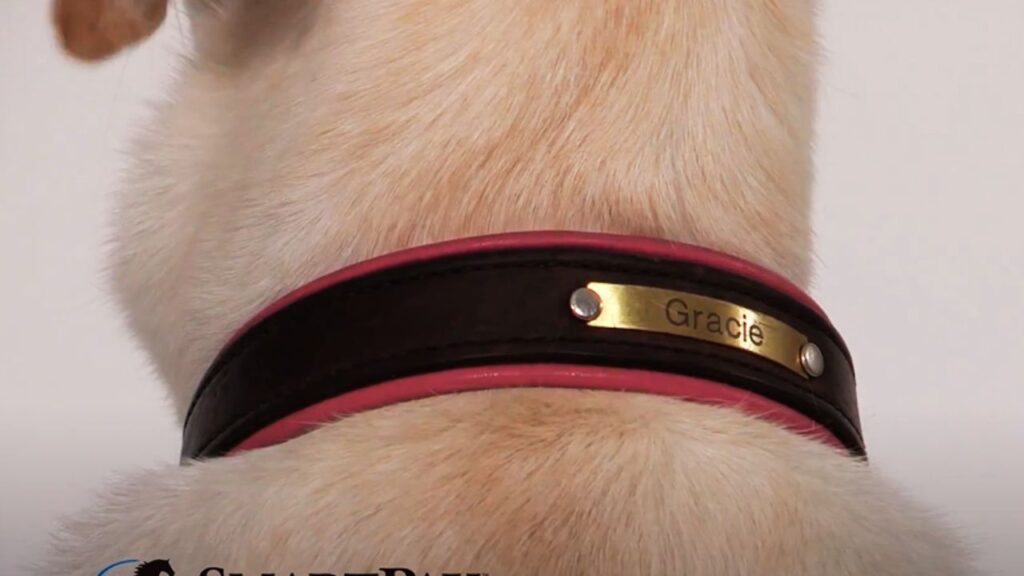
- Pros: Soft and comfortable for long wear.
- Cons: Can be more expensive and may require regular cleaning.
Practices for St. Bernard Collar Adjustment | How to Adjust a St. Bernard’s Collar
What are the best practices for St. Bernard collar adjustment? Once you’ve chosen the right type of collar for your St. Bernard, it’s important to adjust it properly to ensure both safety and comfort.

1. Fit the Collar Correctly
The collar should sit snugly around the base of the neck, without being too tight or too loose. Use the two-finger rule as mentioned earlier: you should be able to comfortably slide two fingers between the collar and your dog’s neck.

2. Avoid Over-Tightening
A collar that’s too tight can cause discomfort, skin irritation, and even restrict breathing. Be mindful not to over-tighten the collar, especially when adjusting a martingale collar. If you’re using a martingale, ensure that it only tightens when the dog pulls, and doesn’t remain tight at all times. Discover the best collars for short-haired dogs with these 6 top recommendations.
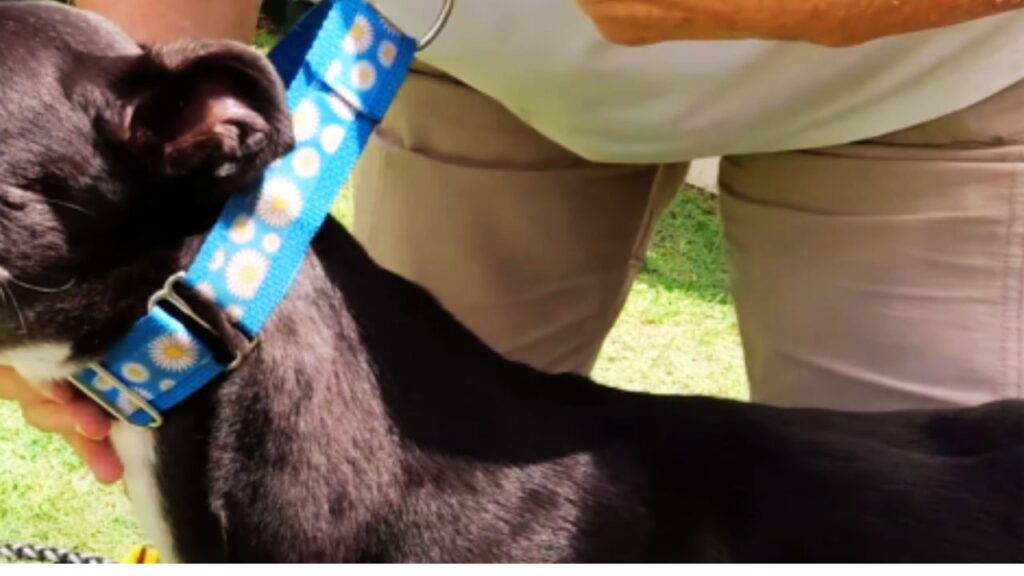
3. Regularly Check for Fit
It’s essential to regularly check the fit of your St. Bernard’s collar, especially as they grow or if they gain or lose weight. Dogs can also develop matted fur under the collar if it’s left on too tightly for long periods, so always ensure the collar fits properly.
4. Ensure Durability and Cleanliness
St. Bernards are active dogs that enjoy outdoor activities, so their collars are likely to get dirty or worn down over time. Opt for a collar that is easy to clean and maintain. Nylon collars are typically more weather-resistant and easy to clean, while leather collars may require more maintenance but offer a classic, durable option.
Safety Considerations
When adjusting your St. Bernard’s collar, there are a few important safety considerations to keep in mind:
1. Use a Breakaway Collar for Unsupervised Time
If your St. Bernard wears a collar indoors or in the yard when unsupervised, consider using a breakaway collar. These collars are designed to release if they get caught on something, preventing your dog from choking.
2. Identification Tags
Make sure your St. Bernard’s collar has a sturdy D-ring for attaching identification tags. Given their size, St. Bernards may sometimes wander off, so having a collar with an ID tag that includes your contact information is essential for their safety. Understand if the Cane Corso is a high-maintenance dog with this insightful guide.
3. Avoid Choke Chains and Prong Collars
Choke chains and prong collars should generally be avoided for giant breeds like St. Bernards, as they can cause injury if used incorrectly. If you’re working on training your St. Bernard, consider using a martingale collar or a gentle leader, which provide more humane options for controlling your dog during walks.
Common Mistakes to Avoid
- Not Measuring Properly: Make sure you accurately measure your dog’s neck and choose the right size collar. A collar that is too loose can slip off, while one that’s too tight can cause discomfort.
- Neglecting Regular Checks: St. Bernards grow quickly, especially as puppies. Always check their collar fit regularly to ensure it isn’t too tight or too loose.
- Using the Wrong Type of Collar: Avoid using collars that don’t suit your dog’s specific needs. For example, if your dog pulls a lot, a harness or martingale collar may be a better option than a flat buckle collar.
Wrapping Up:
Adjusting a collar for your St. Bernard requires careful consideration of their large size, neck circumference, and activity level. The key is to choose a collar that’s both comfortable and secure, whether it’s for daily wear or training purposes. Make sure to measure your dog’s neck accurately, use the two-finger rule for a proper fit, and regularly check the collar to ensure it remains in good condition.
By following these best practices, you can ensure your St. Bernard is safe, comfortable, and well-controlled during walks and other activities. Hope so, now you know what are the best practices for St. Bernard collar adjustment. Explore the Cane Corso growth and weight chart and nutrition plans.


